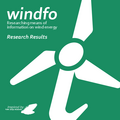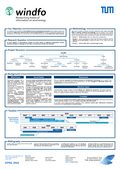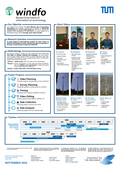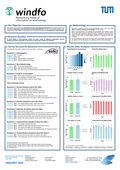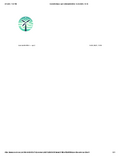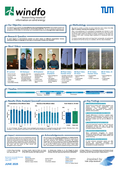

windfo
Our objective was to identify the most effective way of presenting information that enables experts and scientists to effectively communicate on social media platforms. We aimed to assess the retention and acceptance of information on wind power as a renewable energy source through short video formats.
Research Report
Who we are
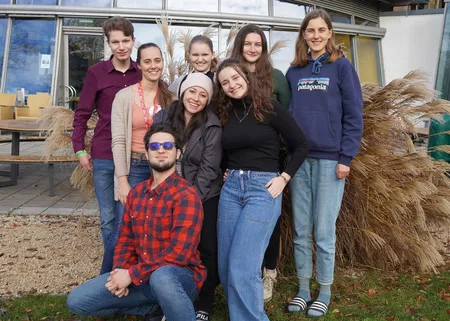
Team members
| Tutors
Supervisors
|
What we do
To summarize our research question in one sentence, we wanted to find out: To what degree is informational content via short videos of different presentation format, clothing and type of language on the topic of wind power trusted and retained?
In order to reach this goal, we set on using the following:
Methodology
We wanted to create a number of social media-like short videos that only differ in setting, clothing and language, but not content. One of these videos was shown to each individual. After that, participants were asked to fill out a questionaire about, among other things, the content of the video.
- Group 1: street survey, with one video and a questionaire
- Group 2: survey conducted in a lab under the same conditions, with the addition of an eye-tracker to determine parts of the videos that draw attention
- Group 3: online video with a click-through survey
Our project work was structured into three main parts:

Timeline
Our schedule over the 20-month-long scholarship program looked like this:

Background
Wind Power | Renewable energies are a topic of contention, often generating debate influenced more by social factors than factual evidence. Wind power, a longstanding renewable energy source, is commonly seen as straightforward. However, this familiarity does not always translate to comprehensive knowledge. Consequently, opinions on wind power, including concerns about bird safety, cost-effectiveness, and weather dependency, often lack a factual foundation. | |
Social Media | Nowadays news consumption relies heavily on social media. Especially TikTok, YouTube, and Instagram are used as primary news sources for teenagers, surpassing traditional outlets. A study by German broadcaster ZDF indicates that 78% of individuals aged 15 to 29 use Instagram weekly, with 41% using TikTok regularly. Germany averages 89 minutes of daily social media usage. While social media serves as a medium for communication and information dissemination, it also facilitates the rapid spread of misinformation. Meanwhile, many experts, scientists, and professionals struggle to effectively utilise social media platforms. As a result, their research often reaches only a fraction of the potential audience. | |
Information Retainment | We are constantly exposed to immense amounts of multimedial information. As a result of the constant influx of new information and entertainment, we often struggle to effectively retain and comprehend the content presented to us. | |
Attention Span | Overstimulation through endless scrolling affects our attentional resources, diminishing attention spans over time. When our focus is not immediately grabbed, we become disinterested, which can hinder our cognitive system's ability to retain new information. | |
Credulity | People frequently accept social media content without verifying its accuracy, particularly when there is a bond with the creator or when the content resonates with their beliefs. As a result, social media becomes a platform where opinions quickly gain widespread acceptance, contributing to the proliferation of misinformation. |
Below you can find some of our materials, like posters presented at conferences and fairs.
Contact
Are you interested in finding out more or have any questions? Don't hesitate to reach out!
Email: windfo(at)ja.tum.de

